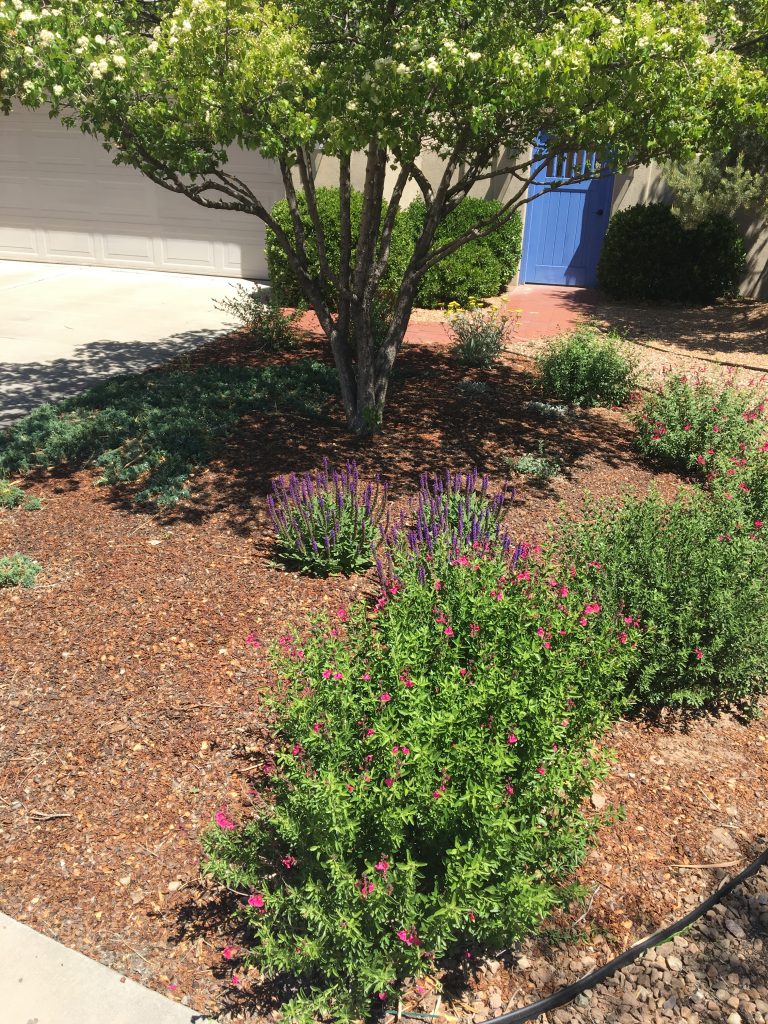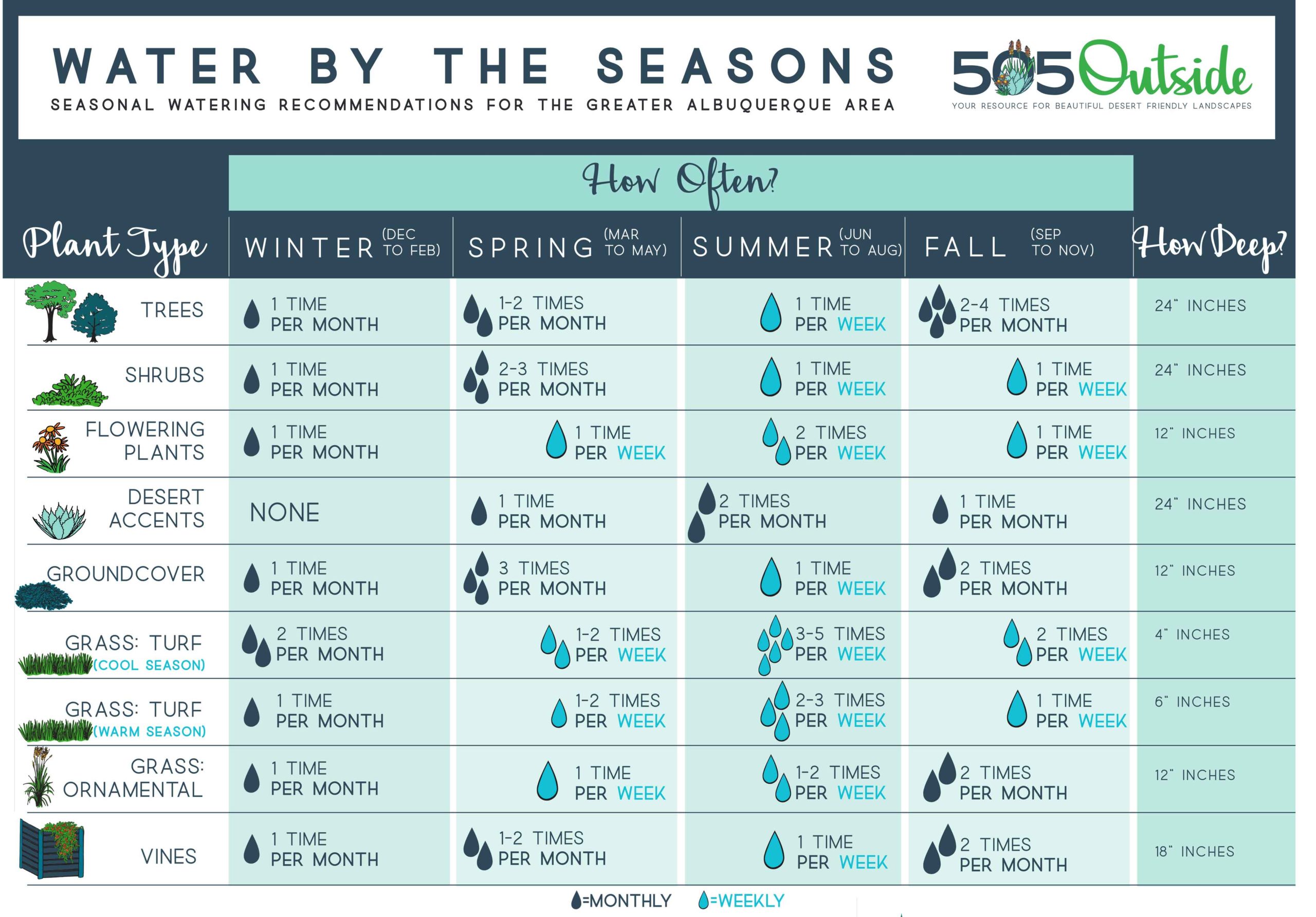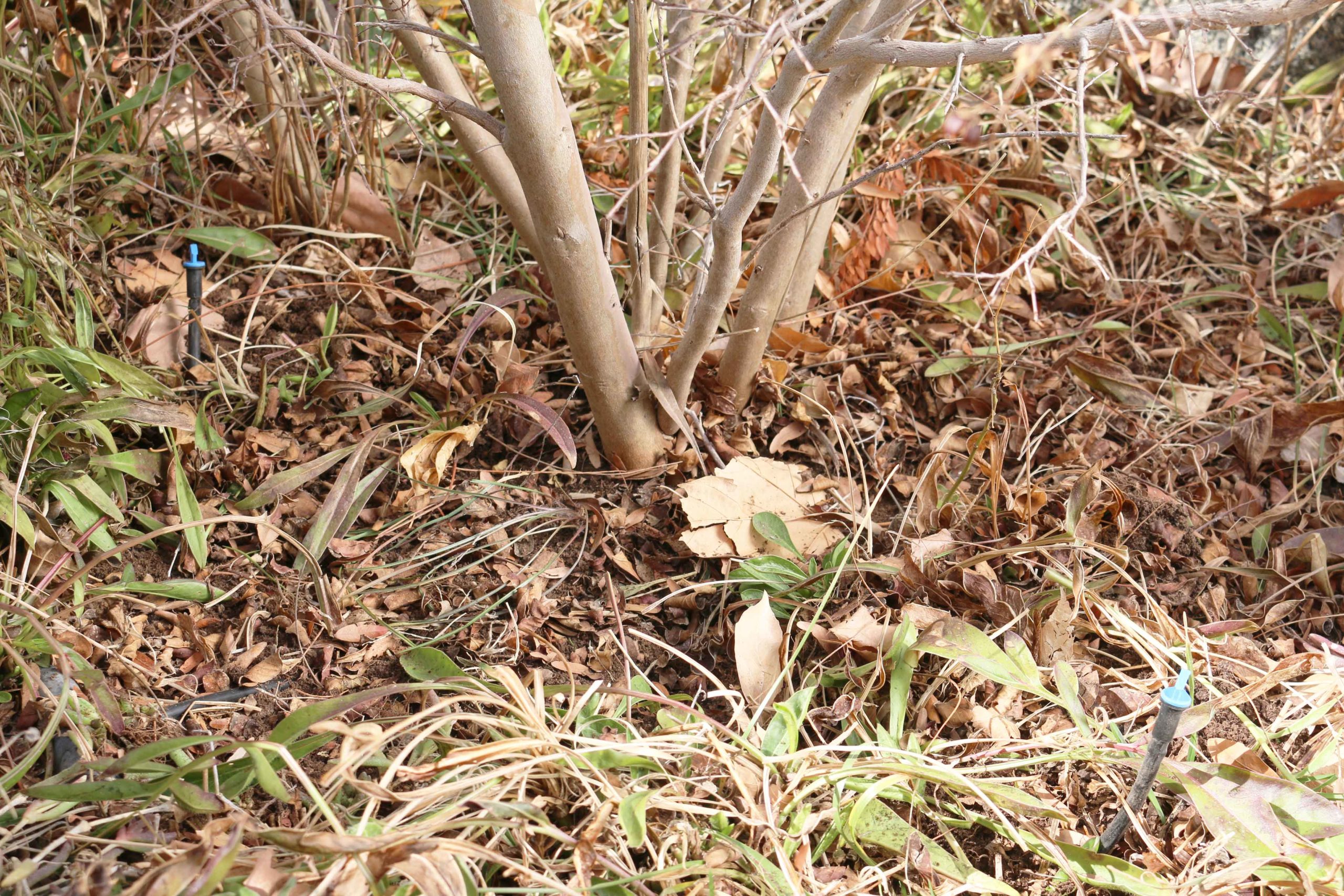Drip irrigation systems play an important role in desert-friendly xeriscapes. When properly designed, installed and managed, drip irrigation efficiently maintains the optimal range of moisture in the soil. It applies water in precise quantities, to the right depth and on a set schedule. Installation and modifications are easy to do and relatively inexpensive.
Drip irrigation is the recommended method of delivering water to shrubs, trees and all other plants that are not considered turf grasses. When using drip irrigation there are a few things to keep in mind to make sure you are watering as efficiently as possible.
Below are some “Rules of Thumb.”
- Grouping plants of similar water needs on the same drip line makes establishing and maintaining plants much easier. This is called hydrozoning.
- Drip emitters should be placed where the backfill meets the root ball. Larger plants need several higher than normal flow rate emitters to water the transplanted roots plus the backfill. Water needs to penetrate the soil deep enough so that the entire root ball plus the soil below the roots are wet.
- As trees become established, drip irrigation emitters need to be moved away from the original rootball and to the edge of the tree’s canopy. Additionally, the number and size (volume) of emitters need to be increased as the tree grows.
- To grow a healthy tree, add ground covers, ornamental grasses and/or shrubs. They act as a supportive network around a tree so the tree roots can grow from one irrigated spot to another, sharing water with all the plants under and beyond its canopy.

- The length of time it takes for plants to become well- established varies greatly and depends on the species of the plant and the site conditions. The best adapted, fastest rooting plants may become well-established in one or two growing seasons. Some plants — such as those in extremely hot or exposed windy locations — may take three to five years of weekly watering during the summer before the quantity of water they need can be reduced.
- For the first month or two after planting, keep the drip lines running once a week for 45 minutes at a time. If there’s no rain and the temperature push 100 degrees for many days in a row, you may need to water every 4 to 5 days. After a few months, you can follow the watering recommendations offered in the Water by the Seasons chart. For plants to get properly established, it is important that water penetrates the soil at least 6 inches deeper than the roots of the new plants.
- Once your trees and other plants are established, the best way to efficiently water your trees and plants and maintain a healthy landscape is to follow the Water by the Seasons recommendations shown below.



